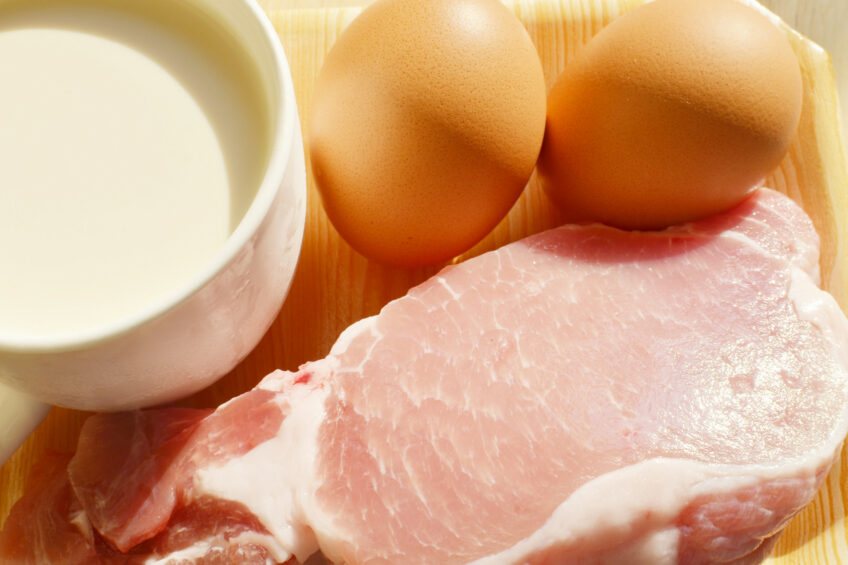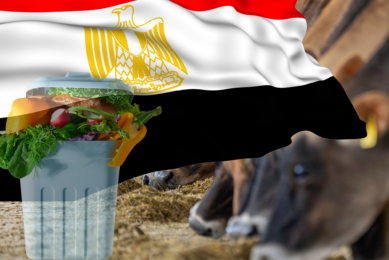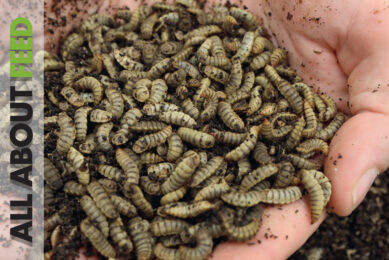Reducing veterinary drug residues in animal products

Veterinary drug residues in animal-derived food products are considered a potential health hazard for human consumption due to developing multidrug resistance, carcinogenicity, and disruption of gut microbiota. This article will discuss sources of drug residues in animal products, factors affecting drug residues in animal-derived foodstuffs and possible solutions for this issue.
SUSTAINABILITY & WELFARE SPECIAL 2024 – read all articles
Drug residues result from inappropriate or extra-label drug usage, failure to maintain drug withdrawal periods, or poor livestock production practices. Antibiotics, antihelminthics, anticoccidials, and nonsteroidal anti-inflammatory drugs are the main sources of drug residues causing global food contamination.
Sources of veterinary drug residues in animal products
Antibiotics residues
Antibiotics are widely used for therapeutic, prophylaxis, and growth promotion purposes in 80% of food animals. Antibiotics prevent protein synthesis, cell division and development, and cell wall synthesis in pathogenic bacteria. Unexpected antibiotic residues in farm animals’ meat, milk, and eggs are caused by cross-contaminated feed ingredients in the pasture or feed mills, recirculation through manure and bedding materials, and antimicrobial-contaminated feed ingredients or water provided to the animals. The antibiotic contamination of milk is usually due to intramammary infusions of antibiotics for treating mastitis. The antibiotic contamination of eggs is affected by the formation of yolk and white. Due to strict regulations in Europe and the US antibiotic residue are rare in livestock and poultry meat. However, the incident rate of antibiotics is different in other countries. For example, the incident rate of antibiotic residues in pork, chicken, and beef is 37.2% in Madagascar, 0.5% in the Republic of Korea, 0.8% in Japan, 11.9% in Vietnam, and 2.7% in Malaysia.
Antihelminthics residues
Antihelminthics are frequently used to reduce the economic impact of parasitic infections in livestock and poultry. Ivermectin is a lipophilic antihelminthic extensively used in farm animals, with a long withdrawal period in animal products with high fat content. Residues of benzimidazole and ivermectin have been found in beef and dairy products in Ireland, the UK, Sweden, Belgium, and Germany. In addition, dairy cattle can absorb pesticides through ingestion, inhalation, and dermal absorption into mammary gland and milk.
Anticoccidials residues
Organisms of the genus Eimeria damage gut mucosa of the host animal and cause coccidiosis. Anticoccidials are widely used to prevent, control, and treat livestock and poultry coccidiosis. Although, these drugs are metabolised rapidly and accumulate highly in tissues and eggs. The presence of anticoccidial residues such as robenidine, monensin, salinomycin, and lasalocid in animal products has been reported in Northern Ireland, and the UK.
Nonsteroidal anti-inflammatory drugs residues
Nonsteroidal anti-inflammatory drugs are vastly used to treat inflammation, pain, respiratory diseases, fever, and musculoskeletal disorders in livestock and poultry. These drugs bind to plasma proteins and are distributed through tissues and fluids. Flunixin, meloxicam, tolfenamic acid, metamizole, and diclofenac are administered in dairy cows and their residues may be excreted in milk.
Factors affecting drug residues
Factors including drug formula, route of administration, dose, animal breed, age, sex, and body condition affect drug residue levels in milk, meat, and eggs. In addition, physicochemical traits of a drug including acidic or basic properties and lipid solubility impact its diffusion through cell membranes, thus the concentration of residues in tissues.
Drug residues in milk and milk products
Milk is extensively consumed by people of all ages around the world; therefore, drug residues in milk and milk products is a great issue in dairy industry. Most milk products go through thermal treatment such as pasteurisation, ultra-heat treatment, and sterilisation which reduces the quantity, chemical structure, and toxicological effects of drug residues. For example, ultra-heat treatment lowers the concentrations of oxytetracycline and tetracycline by 40% and 30%, respectively, and sterilisation degraded tetracycline in milk by 98%. In addition, thermal treatment eliminates macrolides in milk by 93% and aminoglycosides by 95%. During yogurt production heat treatment, and lactic acid reduce penicillin, cloxacillin, oxacillin, dicloxacillin, and nafcillin residues.
Drug residues in meat
Drug residues in meat decrease the quality of meat and meat products. Heat treatment or cooking denatures protein, reduces water and fat content, alters pH, thus reducing residue concentration. Cooking reduces doxycycline, oxytetracycline, ampicillin, and chloramphenicol residues in beef by 12% to 50%. In chicken and pork, thermal treatments degrade oxytetracycline, tetracycline, sulfonamide, antihelminthics, and pesticide residues.
Drug residues in eggs
Drugs administered in laying hens are absorbed in the gut, carried through blood to the ovary, and accumulated as residues in yolk and albumen. Heat treatment reduces the quantity of drug residues in eggs through protein denaturation, and pH changes. For example, frying and boiling eggs reduced the concentration of enrofloxacin and tetracycline residues by 69% and 58%, and 52% and 47%, respectively. In addition, boiling eggs eliminates ciprofloxacin, and chlortetracycline by 87%, and 61%, respectively.
Potential solutions
Withdrawal periods are not consistently understood or followed by various farmers; therefore, adequate knowledge of the dosage, side effects, and withdrawal periods must be provided to farmers by veterinarians. In addition, veterinary drugs must be administered according to the directions mentioned on their label. Implementing a risk-based monitoring programme for veterinary drug residues can identify animal products that pose the greatest risks to human health. Another solution is to educate farmers, and consumers about the proper use of veterinary drugs and the risks of drug residues in animal food products. Providing information about alternative methods of disease prevention and control in animals such as vaccination, biosecurity, hygiene, and nutrition is beneficial, as well. Furthermore, implementing standard management practices and herd health programs keep animals healthy and lowers the need to use drugs. In addition, technologies and methods including chromatographic procedures, electrochemical biosensors, optical biosensors, and piezoelectric biosensors can detect drug residues in animal products.
Correct use and management
Administration of veterinary drugs for therapeutic, prophylaxis, and growth promotion purposes leads to residue accumulation in animal products, thus causing significant public health hazards. Therefore, veterinarians, and farmers/producers need to observe the relevant drug withdrawal period, and practice proper drug use and management to reduce drug residues in animal products.
References are available upon request.







